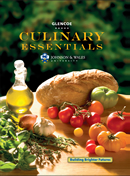
Culinary Essentials ©2010Chapter 14: Cost Control TechniquesCheck Your Answers: After You ReadSection 14.1Review Key Concepts1. Following standardized recipes allows you to determine portion size before you begin preparing the food items. The exact nature of the directions enables you to predict portion sizes if the instructions are followed correctly.2. Product yield is the amount of the food product left after preparation. Foods can lose volume or weight as they are prepared, which means you will need to purchase a larger amount of food than the size of the portion you want to serve. 3. The cooking loss test determines how cooking affects yield percentage. First, identify the net cost and net weight of the raw food product. Next, note how many portions are produced after cooking the product. Finally, multiply the number of portions by the portion weight when served. This gives the total weight as served. 4. To find the cost-per-portion of a recipe, divide the recipe cost by the number of portions or servings. Practice Culinary Academics5. Mathematics The decrease in weight is 12 − 4.5 = 7.5 oz. The percent decrease (shrinkage percentage) is 7.5 ÷ 12 = 0.625 = 62.5%. The decrease in cost is $3.95 − $3.50 = $0.45 so the percent decrease in price is $0.45 ÷ $3.95 = 0.113924 = 11.4%.Section 14.2Review Key Concepts1. Open market or competitive buying is where the operation gets price quotes from several vendors and chooses from among them. Single source buying is where an operation purchases most of its products from a single vendor.2. The proper tools and equipment include: heavy duty gloves with non-slip fingertips, scales, a calculator, cutting devices, and a thermometer. 3. Limiting storage access helps prevent theft, which is a problem for many foodservice operations and results in loss to the business. Practice Culinary Academics4. English Language Arts Use the information given in the section to create food specification sheets that resemble the example in Figure 14.3. Inspect the menu for the school restaurant or cafeteria, determine three ingredients that are used, and create specification sheets for each ingredient that contain all of the necessary information. You may need to do some research to complete the information.5. Mathematics Average price is $40.50. Calculate average (mean) by adding the prices and dividing by 4. $35 + $42 + $46 + $39 = $162. $162 ÷ 4 = $40.50. |  |















